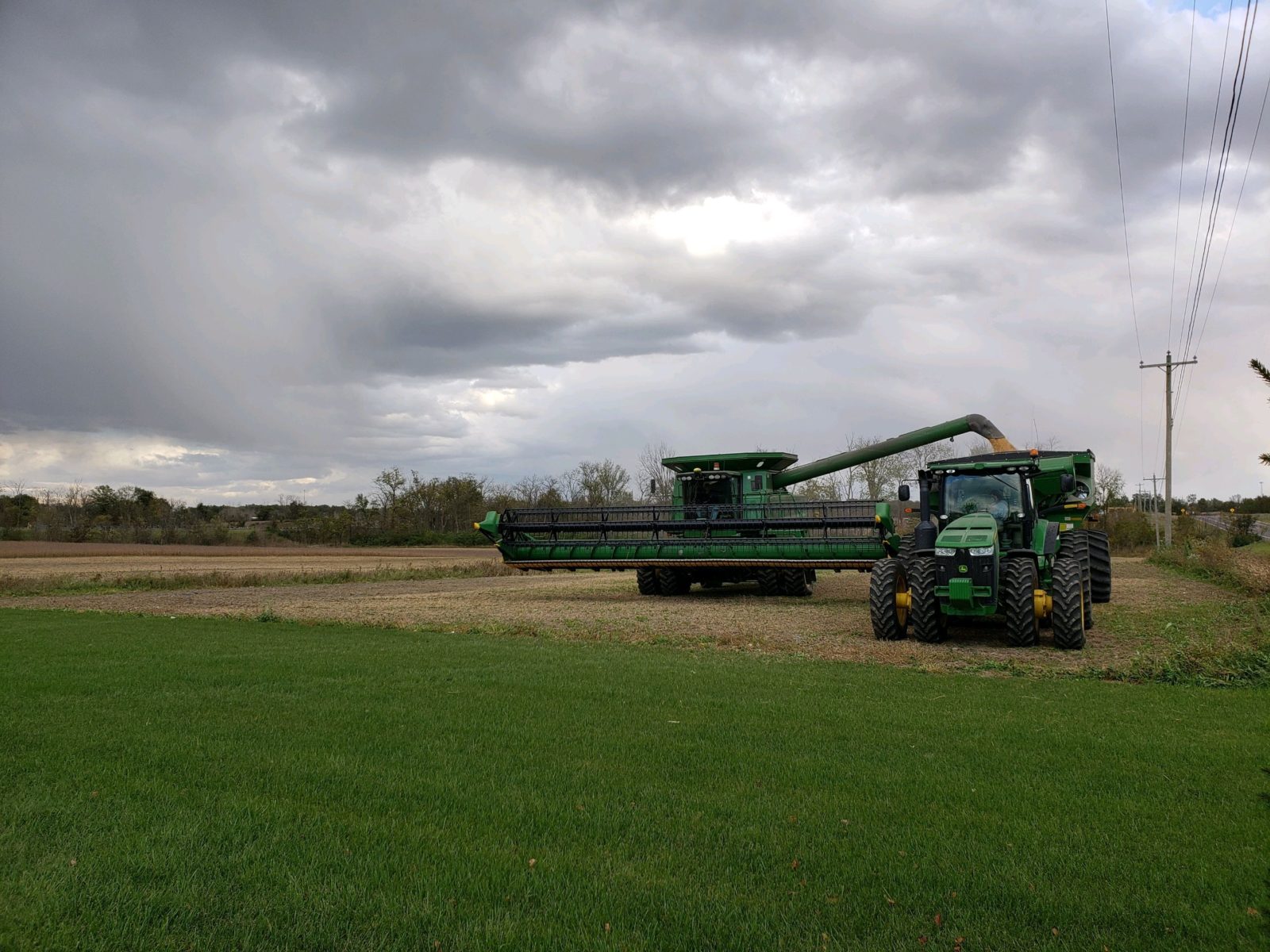 We started harvesting soybeans on October 7. Beautiful, picture-perfect conditions for cutting soybeans helped this harvest season get off to a great start in our region of the eastern U.S. Midwest.
We started harvesting soybeans on October 7. Beautiful, picture-perfect conditions for cutting soybeans helped this harvest season get off to a great start in our region of the eastern U.S. Midwest.
Yields exceeded our expectations. Because of the dry weather and intense late rain, we expected yield to run a bit below our average. But instead, our soybeans are yielding about our average to a bit above average, and that’s a good feeling.
 During harvest, I drive one of our two semi-trucks from the field to one of the local elevators where we have contracts to sell our soybeans. My son-in-law and other help drive the combine and run the grain cart. We have a large grain cart that holds a semi-load of soybeans, so as soon as I return to the edge of the field, my truck gets filled again and I return to the elevator.
During harvest, I drive one of our two semi-trucks from the field to one of the local elevators where we have contracts to sell our soybeans. My son-in-law and other help drive the combine and run the grain cart. We have a large grain cart that holds a semi-load of soybeans, so as soon as I return to the edge of the field, my truck gets filled again and I return to the elevator.
We contracted to sell our soybeans months ago, and now cash prices are actually a bit higher than the prices we locked in with those contracts. That’s very unusual – typically grain prices go down during harvest season. But very little about 2020 has been normal. Because the soybeans are yielding a bit better than we expected, we may have some additional soybeans to sell after our contracts are met, and hopefully we will be able to take advantage of better prices then.
With good weather and minimal breakdowns, we should be able to finish cutting soybeans in mid-October.

However, because our corn was planted late and emerged unevenly, it hasn’t all reached maturity yet. I still don’t expect our corn to be ready to harvest until the beginning of November. We hope that a hard frost holds off as long as possible, to give the corn time to fully mature.
But in the time between finishing soybeans and starting to combine corn, we have plenty of work to do.
I hope to create a couple of new waterways in areas of the field where gullies have washed out year after year, despite our efforts to fill them in. I plan to shape the field and seed it with a mesh of straw and grass seed to get a waterway started. It usually takes a few years and plenty of attention to create new waterways like this, but it’s worth it to protect our soil and water quality.
 After combing soybeans, we fertilize those fields with chicken litter from the nearby poultry farm. The litter provides most of the nutrients our corn crop will need the following year. We already have piles of litter in some fields. After a field is harvested, custom spreaders will spread the litter evenly throughout the field for us.
After combing soybeans, we fertilize those fields with chicken litter from the nearby poultry farm. The litter provides most of the nutrients our corn crop will need the following year. We already have piles of litter in some fields. After a field is harvested, custom spreaders will spread the litter evenly throughout the field for us.
We also will seed cover crops on about one-third of our acres. We will make some adjustments to where we plant cover crops based on our experience this year with the very wet spring. We plant to use rye for the cover crop, and it gets mixed with potash that also fertilizes this year’s soybean fields to prepare for corn next fall. The potash and rye will be broadcast over the top of the field before or after the chicken litter is spread. Then, with surface tillage, we incorporate all the fertilizer and cover crop seed into the top few inches of our soil.

We continue to maintain wildlife refuge strips along some of our fields, and the deer have been thick this year. That’s very exciting to my 15-year-old grandson, who enjoys bow hunting.
We hope the beautiful weather holds, and that yields continue to exceed our expectations.

